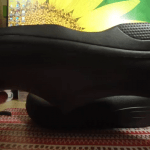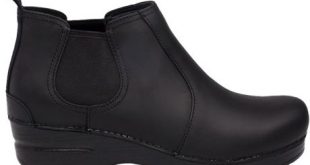What is an oversaturation of nurse practitioners?
The term over-saturation of nurse practitioners is used to describe the state in which there are more nurse practitioners than there are available jobs. It can be defined as ‘the functional equivalent of an excess supply of labor.’ There has been a steady increase in the number of nurse practitioners since their training was formalized.
The U.S. is currently in the midst of a nurse practitioner shortage, with projections that by 2020 there will be more than one million PAs and NPs needed to care for an aging population. With this in mind, one question that arises is whether there is an over-saturation of nurse practitioners into the workforce. It has been estimated that about 60% of all primary care visits are made to NPs rather than physicians; however, statistics show only 30% of Americans know what NP stands for.
This suggests either people aren’t aware they can see an NP instead of a doctor (which could lead to less demand), or people who do know may still opt for seeing their physician because they feel like they’re getting better quality care due to the “M.D.” behind the name (which could lead to more demand).
There have been reports of a shortage of NPs, but there are currently 968 NP programs in the U.S., meaning that if each program graduates 30 students a year, we would have a total of approximately 31,000 yearly graduates. To meet the one million NP estimate, 268 NP programs would have to graduate 500 students a year.
At the same time, the average age of an NP is 48 years old, which means that it’s highly unlikely new NP grads will replace them in the workforce. This could help lead to some of the issues with cutting through red tape and possibly even adding benefits.
In addition, with the passage of health care reform legislation in 2013, there has been a shift from fee-for-service medicine to models that focus on quality and outcome. This means that physicians might no longer have the ability to just see as many patients as they can in a day because their pay will be tied to how effective their care is. This could lead to an even bigger NP shortage, which would ultimately hurt patients.
So is there an oversaturation of nurse practitioners? Or is there still room in the workforce for more NPs?

It seems that while there are currently enough schools, programs, and graduates to meet current demands, projections suggest this won’t be the case within the next couple of years. This means it’s possible for there to be an oversaturation of nurse practitioners if nothing changes.
Nurse practitioners will have a long wait until they can reap all of the benefits their hard work has earned them, but ultimately, the biggest beneficiaries may end up being the patients. How can nurse practitioners and physicians work together so that patients can have their needs met?
The NP shortage is not just a problem for the NPs themselves but also for patients who are looking for high-quality care. There are many factors that could lead to physician burnout, including the fact that physicians often have to see more patients than they have time to see each day. This means that patients who need a lot of face-time with a physician may not be able to find the provider they need.
NPs can help mitigate this issue by taking on more patients and working with physicians to make sure those who need the most attention still get it. According to The American College of Nurse Practitioners (ACNP), NPs and physicians work together to improve health care for patients.
They agree that there is a place in the healthcare system for both nurses and doctors, but they argue that with the influx of new primary care providers, teamwork is essential. Nurse practitioners have a long history of collaboration with doctors that have been successful in their practice. A robust workforce will be essential to meet future demands for patient care.”
Research also shows that patients feel they get better quality care when nurses and physicians work together. ACNP’s goal is to increase the number of nurse practitioners who are able to provide high-quality, patient-centered care at every level, not just in primary care, and hope to see an increase in support from all providers as well as policymakers.
What is the reason for the NP shortage?

The reason for the NP shortage is a topic of debate. Many people believe that there are not enough nurse practitioners in nursing, but this is not the case. Instead, there are just enough NP graduates to fill the positions that exist now.
This means that while it may be difficult for new students to find a program at the moment, there are enough nurses with advanced degrees that if someone were looking for employment, they could find it. The real reason for this shortage comes down to one of the reimbursement rates. Most nurse practitioners have an average starting salary of around $100,000 per year, which is similar to what physicians make right out of school.
The problem is how much NPs are paid once they have been working in their field for a few years. While some can negotiate higher salaries or work extra shifts to earn more money, most NPs end up making around half of what physicians do despite their similar educational preparation. NP salaries vary from state to state.
In Texas, NPs only earn around $74,000 annually compared to their peers who went into nursing at New York’s University of Buffalo College of Nursing, where grads typically begin at more than $100,000 per year. The average salary for nurses is relatively high, but they are less likely to see significant increases in their paychecks over the course of their careers compared to other healthcare professionals.
Is it true that many of the NP shortages are caused by low salaries?
This is correct. The lack of pay that NPs are offered is one of the largest reasons why some people refuse to enter this field. NP salaries vary greatly from state to state, but some argue that all NPs should be paid on par with physicians in order to boost recruitment and retention.
With better compensation for advanced practice providers, more nurses would feel motivated to pursue a career as an NP rather than look at other fields where they can make more money.
 Nursing Trends
Nursing Trends







